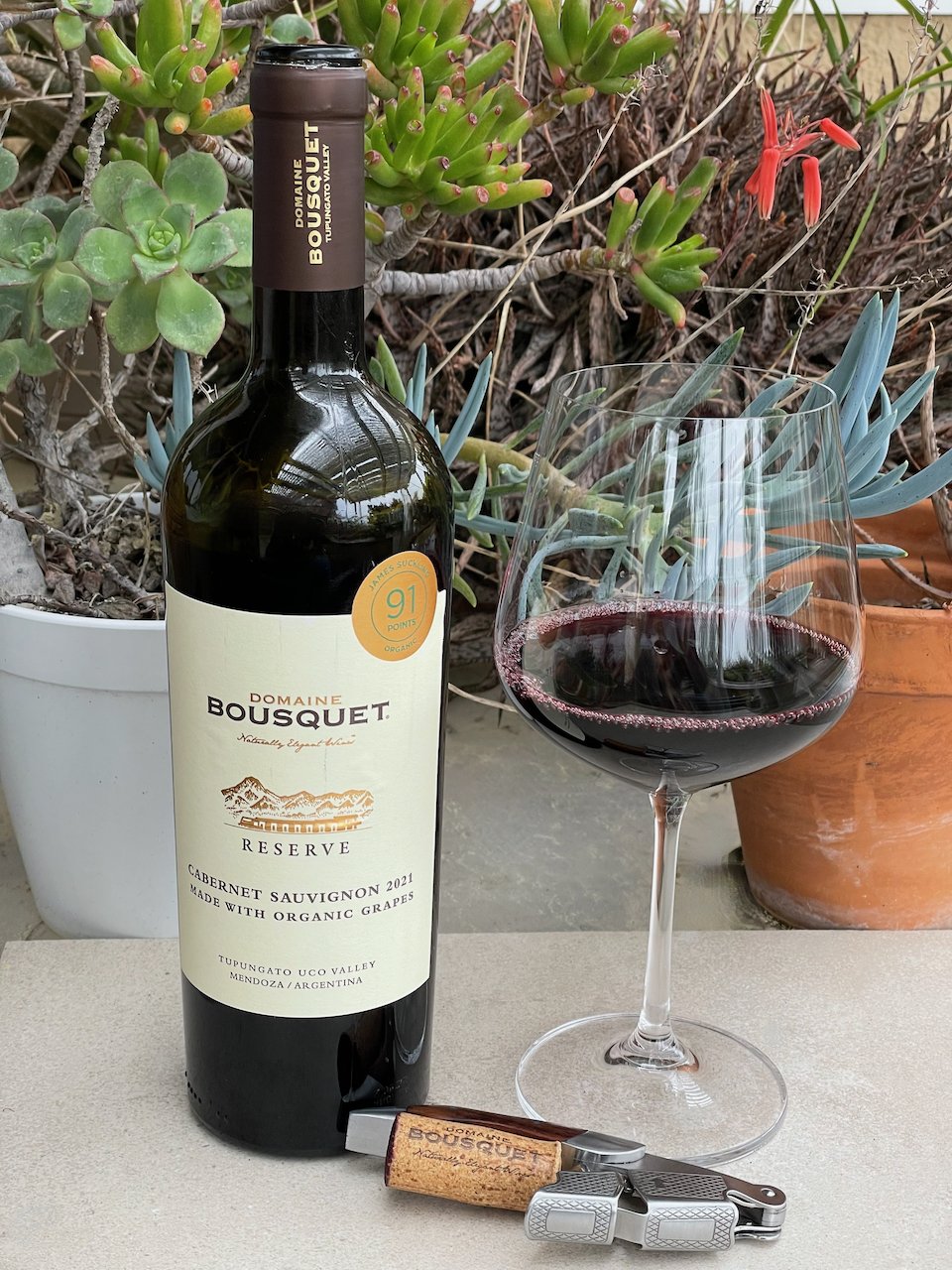2021 Domaine Bousquet Reserve Cabernet Sauvignon ($18)
The Domaine Bousquet winery is a family-owned estate in the Gualtallary Valley, a scenic, remote, arid terrain high in the Uco Valley (4000-plus-foot elevation) in Argentina’s Mendoza region, close to the border with Chile. Their wines are made from hand-picked, certified organic estate fruit.
This Reserve Cabernet Sauvignon is produced from 85% Cabernet Sauvignon and 15% Malbec. It undergoes a 48-hour cold maceration followed by a 10-day fermentation using selected yeasts, and then is followed by another 10-day maceration. It then undergoes 100% malolactic conversion and is aged in contact with French oak 6-8 months.
It is deep ruby in color with aromas of black cherry, delicate herbs and a hint of earthiness. On the palate, this full-bodied wine has fruity, jammy flavors of black plum and black currant with a bit of oak on the easy finish.
This Domaine Bousquet Reserve Cabernet Sauvignon is a great fit as the Behind the Cork™ Wine of the Week. And, at this price, is a great value too!
Alcohol: 14.5%, Total Acidity: 5.55 gm/L (pH: 3.67), Residual Sugar: 1.8 gm/L
Disclosure of Wine Sample Submission: I received this sample at no cost for review. The opinions expressed are entirely my own.
Samples Provided by Domaine Bousquet Winery and Creative Palate Communications







